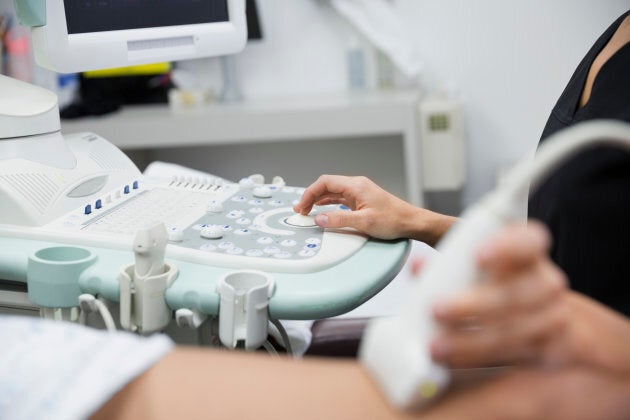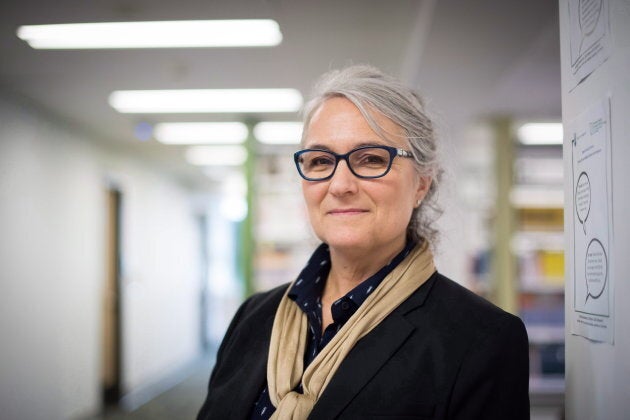
Canadian doctors are no longer required to perform an ultrasound before prescribing medicine that will end unwanted pregnancies. Experts say the change will eliminate a significant barrier to abortion access, particularly for women living in rural areas who often had to travel major distances or wait long periods of time before they could get ultrasounds.
Health Canada made the announcement that an ultrasound was no longer required before a doctor could prescribe Mifegymiso, the "abortion pill," in a press release on Tuesday.
"Prescribers now have the flexibility to use their medical judgement," the agency said. "It also responds to concerns that some patients may have been facing unnecessary barriers or delays in accessing this product."
Dr. Wendy Norman, a professor in the University of British Columbia's Obstetrics and Gynecology department and a member of the school's Contraception and Abortion Research Team, said she was "absolutely delighted" to hear the news.
"Women have better access, and faster," she told HuffPost Canada. "Health care practitioners across Canada have been asking for removal for this restriction."
What is Mifegymiso?
Often called the "abortion pill," Mifegymiso is actually two different pills. The first, mifepristone, blocks the effects of progesterone, which the body needs for pregnancy. About 24 to 48 hours later, misoprostol is taken, which causes uterine contractions. The two pills taken together will terminate a pregnancy.
Taking Mifegymiso is also referred to as having a medical abortion. The drugs were approved by Health Canada as an alternative to surgical abortion in 2015. They had already been approved for use in more than 60 countries before Canada, Macleans reports.

Suzanne Sicchia, a University of Toronto public health professor who has researched health policies around Mifegymiso, says she often encounters people who think the drug is new and dangerous, when in fact it's been safely used in some countries since the 1980s.
"It's both safe and effective," she told HuffPost Canada. "The World Health Organization is very clear about this."
The other conditions of its use haven't changed since Tuesday's declaration: it's still only prescribed to patients who are less than nine weeks pregnant.
And there's no reason to believe that the elimination of an ultrasound would in any way cause Mifegymiso to be mis-prescribed. "I can't imagine a situation in which it would be misused," said Dr. Jennifer Blake, CEO of the Society of Obstetricians and Gynaecologists of Canada.
Earlier On HuffPost: Health Canada approves the use of Mifegymiso. Story continues after video
There were two significant purposes to the ultrasound, Norman explained: to make sure the pregnancy isn't ectopic, and to determine gestational age. Both can be determined in other ways. Health Canada does still recommend an ultrasound "when the gestational age is uncertain or an ectopic pregnancy is suspected," the release says.
An ectopic pregnancy is a specific complication where the fetus grows outside of the uterus. It can't grow or develop normally, and risks causing internal bleeding and bursting structures that aren't meant to contain a fetus. Ectopic pregnancies are typically terminated through medications or surgery.
But Mifegymiso won't terminate an ectopic pregnancy, Norman explains, because "the pill acts on the place where the pregnancy joins with the uterus." It won't cause any harm to the woman seeking to end her pregnancy, but it won't end her pregnancy, either.

Still, doctors and nurses have other methods to detect ectopic pregnancies.
"The guidelines tell practitioners how to do that, the training courses tell practitioners how to do that," she says. "It doesn't have to be ultrasound."
Benefits of eliminating the step
The biggest and most significant benefit, Norman says, is that abortion services will become available more widely. Although there are no parts of the country where abortion is banned, there are many where it just isn't performed. A study of women seeking abortions in 2013 (two years before Health Canada approved Mifegymiso) found that nearly half of the participants — 44.9 per cent — had to travel an hour or more to access abortion services.
And those spatial barriers often coexist with class and race barriers: women from lower income groups were more likely to have travelled further. Indigenous women were almost three times more likely to travel 100 kilometres or more.
The advent of medical abortion in Canada was meant to close those disparity gaps: women could take the drugs at home, in their own communities. But the need for an ultrasound often meant traveling long distances anyway.
In Nova Scotia, the average wait for a dating ultrasound was about a week, The Globe and Mail reported in September. Given that Mifegymiso can't be given to women more than nine weeks pregnant, waiting a week can have serious consequences. (The province's health minister Randy Delorey defended the waiting time, telling reporters women had "relatively timely access" to abortion services.)

Another big benefit, Norman says, is confidentiality — an especially important consideration in small towns. "This keeps the procedure between the patient and their health care practitioner," she says.
What other access barriers still exist?
Canada still has a long way to go in terms of abortion access, Sicchia said.
"This revision to the guidelines brings us a step closer to improved access, but it would be a stretch to say that this change alone will solve all the inequities in access to medical abortion that women and trans people face across Canada," she explained.
More from HuffPost Canada:
"Compared to countries like France and China, Canada hasn't been especially innovative or progressive when it comes to removing barriers to access to medical abortion."
Norman says the next big access barrier is in the prairies. Most provinces and territories cover the cost of both surgical and medical abortions, but Saskatchewan does not. (The province's health minister recently said he'll consider it after pressure from other political parties.) Access in Manitoba is also scarce, particularly for lower income women: medical abortion is only covered in three locations, all in cities, one of which only has the funding to stay open two days a week.
"People are having to travel into cities to reach the centres that are offering surgical abortion when they could be accessing free medical abortion in their communities if the government could cover the cost," she says. "It's a travesty that these governments are ignoring the needs of their women."
Also on HuffPost: